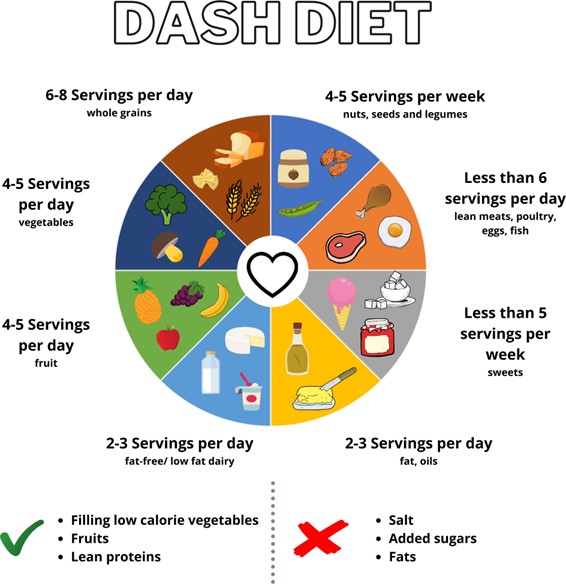A nurse is reviewing a client's laboratory results for effectiveness of total parenteral nutrition (TPN). Which of the following laboratory values is the best indicator for the nurse to monitor for short-term effectiveness of the TPN?
Hemoglobin
Total albumin
Transferrin
Prealbumin
The Correct Answer is D
Prealbumin (also known as transthyretin): Prealbumin is a protein synthesized in the liver and has a shorter half-life compared to albumin. It is considered a more sensitive marker for
short-term nutritional changes and can reflect the effectiveness of TPN within a few days.
Prealbumin levels can indicate the response to nutritional interventions and provide a more immediate assessment of nutritional adequacy.
Hemoglobin: Hemoglobin is a measure of the oxygen-carrying capacity of red blood cells and is typically used to assess anemia. While hemoglobin can be affected by nutritional status, it is not a specific marker for the short-term effectiveness of TPN.
Total albumin: Total albumin is a measure of protein status and can be affected by various factors, including inflammation and liver disease. However, it has a longer half-life and slower response to nutritional changes, so it may not be the best indicator for short-term effectiveness.
Transferrin: Transferrin is a protein involved in iron transport and can be used as an indicator of iron status. However, it may not reflect short-term changes in nutritional status and is not specific to TPN effectiveness.
Monitoring prealbumin levels can help determine the short-term effectiveness of TPN and guide adjustments to the nutritional plan.
Nursing Test Bank
Naxlex Comprehensive Predictor Exams
Related Questions
Correct Answer is D
Explanation
The DASH diet is a dietary approach specifically designed to lower blood pressure. It emphasizes consuming foods that are rich in nutrients like potassium, calcium, and magnesium, while reducing the intake of saturated fat, cholesterol, and sodium. Calcium-rich foods are an important component of the DASH diet as they have been shown to have a beneficial effect on blood pressure. Good sources of dietary calcium include low-fat dairy products, fortified
plant-based milk, leafy green vegetables, and calcium-fortified foods.
"Consume ten percent of total calories from saturated fat": The DASH diet recommends reducing the intake of saturated fat to improve heart health. The goal is to consume no more than 6% of total calories from saturated fat. Saturated fats are typically found in animal products, such as fatty cuts of meat, full-fat dairy products, and tropical oils like coconut and palm oil.
"Increase intake of refined carbohydrates": The DASH diet encourages the consumption of whole grains rather than refined carbohydrates. Whole grains are rich in fiber and other nutrients, which can help lower blood pressure. Refined carbohydrates, on the other hand, can lead to spikes in blood sugar levels and are generally less nutritious.
"Limit sodium intake to 3,200 milligrams per day": The DASH diet recommends reducing sodium intake to 2,300 milligrams per day or less. For individuals with hypertension or at risk for hypertension, including many clients with hypertension, further lowering sodium intake to 1,500 milligrams per day may be advised. Reducing sodium intake is important for blood pressure management.

Correct Answer is B
Explanation
Steak cut into small pieces: While it is important to introduce a variety of textures and flavors to toddlers, steak may be challenging for them to chew and swallow safely. It is recommended to offer softer and more easily chewable protein sources, such as finely minced or shredded cooked meat, ground meat, or soft fish.
Cooked spaghetti with sauce: This is a good choice for a toddler. Cooked spaghetti with sauce provides a balanced meal that includes carbohydrates from the pasta, nutrients from the sauce (e.g., vegetables, protein), and a variety of flavors and textures. It is important to ensure that the spaghetti is cooked to an appropriate tenderness for the toddler's chewing and swallowing abilities.
Hot dogs cut in fourths: Hot dogs pose a potential choking hazard for toddlers due to their cylindrical shape and texture. Cutting the hot dog into smaller pieces is a safety measure, but it is still recommended to be cautious with hot dog consumption and offer alternative protein sources that are safer and easier to chew.
Caramel popcorn: Caramel popcorn is not an appropriate food choice for toddlers. Popcorn can be a choking hazard due to its small, hard, and irregular shape. Caramel popcorn can also be high in added sugars, which are not recommended in excess for young children. It is important to provide safe, age-appropriate snacks that are easy to chew and swallow, such as cut fruits, soft-cooked vegetables, or age-appropriate crackers.
Whether you are a student looking to ace your exams or a practicing nurse seeking to enhance your expertise , our nursing education contents will empower you with the confidence and competence to make a difference in the lives of patients and become a respected leader in the healthcare field.
Visit Naxlex, invest in your future and unlock endless possibilities with our unparalleled nursing education contents today
Report Wrong Answer on the Current Question
Do you disagree with the answer? If yes, what is your expected answer? Explain.
Kindly be descriptive with the issue you are facing.
